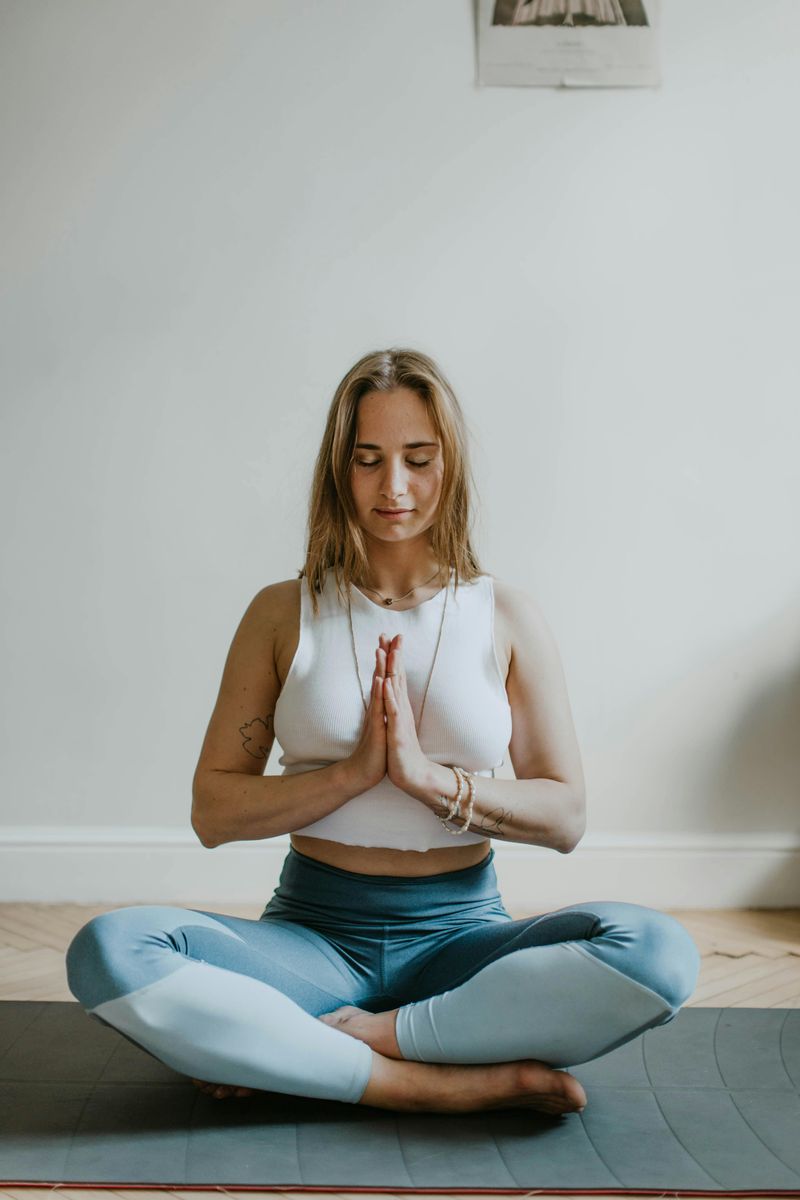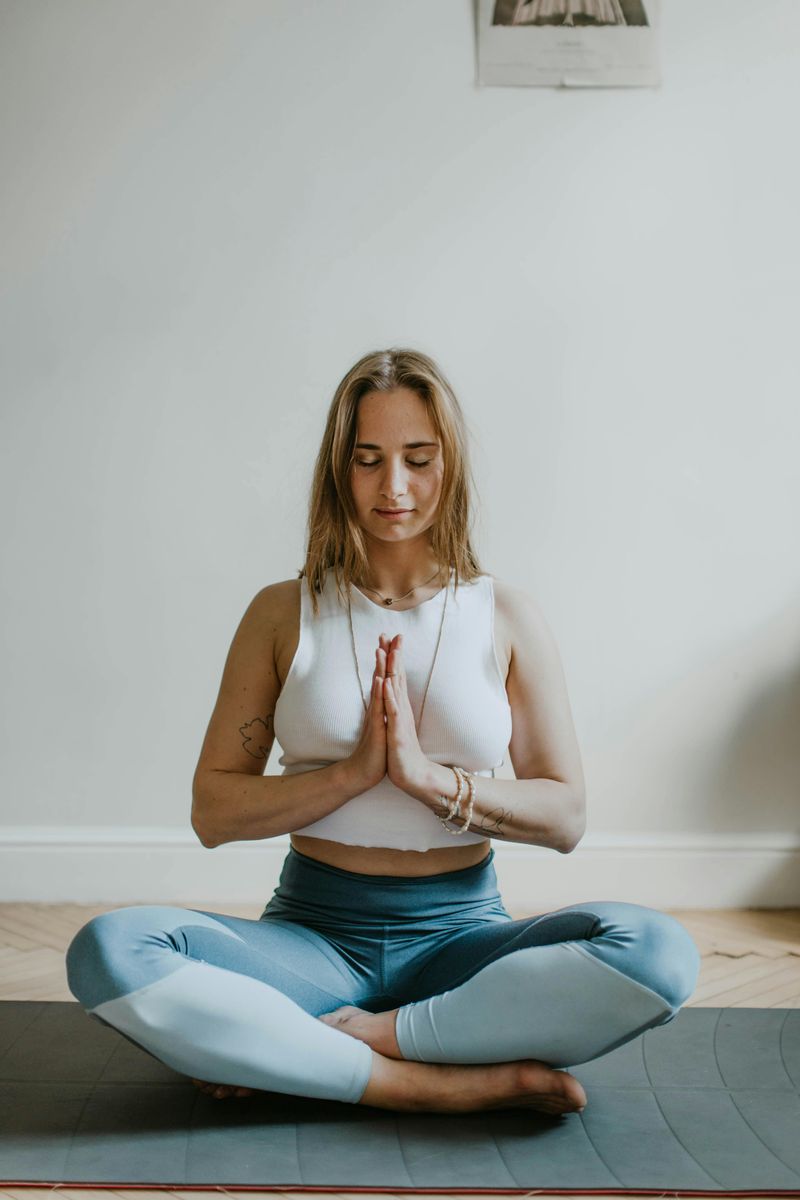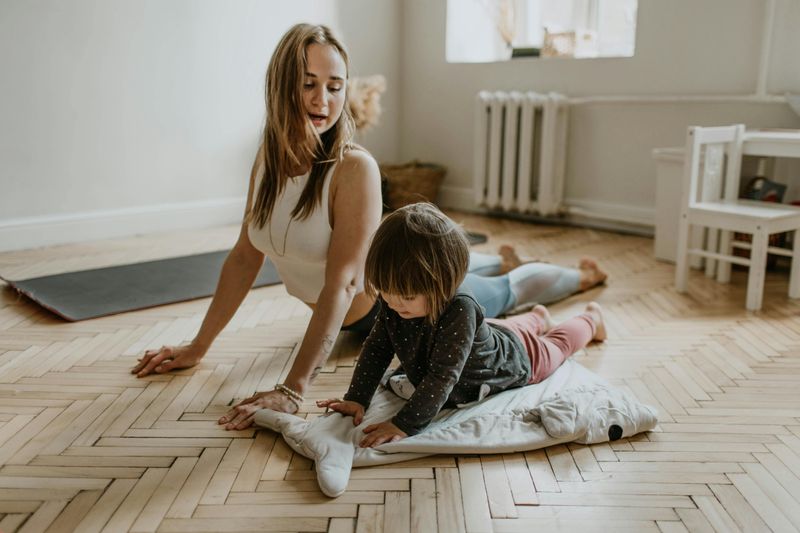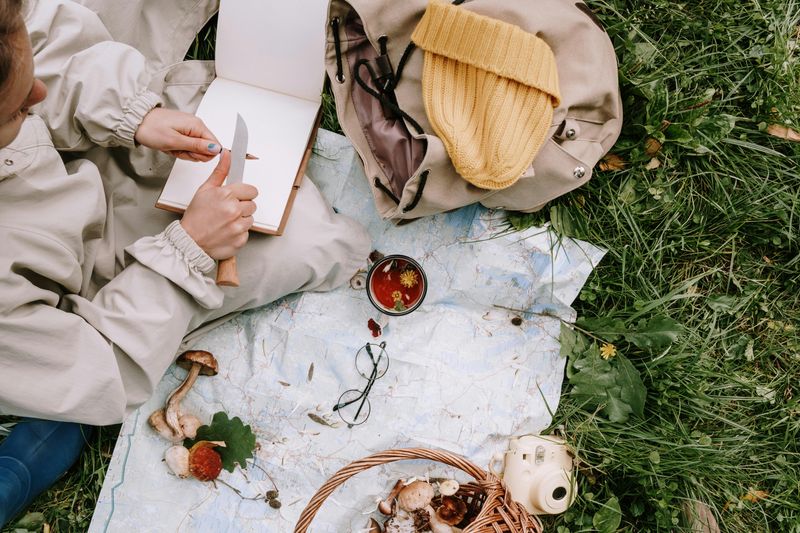18 Shockingly Simple Self-Care Habits That Actually Calm Anxiety

Anxiety can feel like a storm brewing inside your body, making it hard to think clearly or enjoy everyday life. The good news is that small, simple actions can make a big difference in how you feel. These 18 surprisingly easy self-care habits don’t require special equipment or lots of money – just a little time and attention to help quiet your anxious mind.
1. Breathe Like a Box

Your breath is a powerful anxiety-taming tool that’s always with you. Box breathing—inhaling for 4 counts, holding for 4, exhaling for 4, and pausing for 4—activates your body’s relaxation response almost immediately. Many Navy SEALs use this technique during high-stress situations. The structured pattern interrupts racing thoughts by giving your mind something simple to focus on. Try it right now: sit comfortably, breathe in through your nose while counting to four, hold, exhale completely, and pause. Even three cycles can lower your heart rate and help you feel more centered.
2. Five-Minute Mindfulness Moments

Mindfulness doesn’t require hours of meditation or special equipment. Simply paying attention to the present moment—without judgment—can reduce anxiety’s grip in just five minutes. Focus on what you can see, hear, smell, taste, and feel right now. Notice the weight of your body in your chair, the sounds around you, or the texture of something nearby. Research shows this practice literally changes your brain over time. When anxiety strikes, this simple habit helps you step out of worry-mode and into the safety of the present moment where most fears can’t survive.
3. Mental Vacations Through Visualization

Your imagination is a powerful anxiety-fighting tool hiding in plain sight. Guided imagery lets you mentally transport yourself to a peaceful place when physical escape isn’t possible. Close your eyes and vividly picture your perfect calm spot—maybe a beach with warm sand between your toes, gentle waves, and the scent of salt air. Engage all your senses in this mental movie. Your brain often can’t tell the difference between a vividly imagined scene and reality, triggering the same relaxation response. Keep a favorite mental destination ready for anxious moments, like a secret vacation you can take anytime.
4. Movement Snacks Throughout Your Day

Short bursts of movement act like natural anxiety medication. A quick 5-minute stretch, dance party, or walk around the block can break the cycle of anxious thoughts and release tension stored in your body. Movement triggers endorphins—your body’s natural mood lifters—while burning off the excess energy anxiety creates. The rhythm of walking can be especially calming, creating a moving meditation effect. No need for workout clothes or equipment! Stand up right now, roll your shoulders, twist gently side to side, or march in place. Notice how your body feels different after even this tiny movement snack.
5. Forest Bathing for Frazzled Nerves

Nature has a remarkable ability to reset an anxious brain. The Japanese practice of shinrin-yoku (forest bathing) isn’t about exercise—it’s simply being present among trees. The colors, sounds, and natural compounds released by plants have been scientifically proven to lower stress hormones and blood pressure. Even a small urban park or garden can provide these benefits. Leave your phone behind and use all your senses during these green outings. Touch tree bark, listen to leaves rustling, smell the earth. This sensory connection to nature works quickly to quiet mental chatter and bring your nervous system back to balance.
6. Gentle Movement Practices That Ground You

Yoga, Tai Chi, and Qigong offer something special for anxious minds: they unite breath with slow, intentional movement. This combination acts like an anchor during emotional storms. These practices don’t require flexibility or special equipment. Simple movements like gentle arm circles while breathing deeply can activate your parasympathetic nervous system—your body’s built-in calming mechanism. The repetitive nature of these movements creates a moving meditation effect. Your racing thoughts naturally quiet down as your focus shifts to coordinating breath and body, creating a peaceful mental break from worry.
7. Sleep Sanctuary Creation

Sleep and anxiety have a complicated relationship—each can worsen the other. Creating consistent sleep habits might be the most powerful anxiety management tool you’re overlooking. Your brain needs predictability to feel safe. Going to bed and waking at similar times daily helps regulate your body’s natural rhythm. A cool, dark room free from screens signals your brain it’s time to relax. The hour before bed matters most. Replace anxiety-triggering news or work with calming rituals like light stretching, warm showers, or boring books. Your sleep environment becomes a sanctuary that tells your nervous system it can finally let down its guard.
8. Tension Melting Through Muscle Relaxation

Anxiety isn’t just mental—it physically locks up your muscles, creating a feedback loop of tension. Progressive muscle relaxation breaks this cycle with a simple tense-and-release pattern. Starting at your feet, tightly squeeze each muscle group for 5-10 seconds, then completely release. Notice the contrast between tension and relaxation as you work upward through your body. Many people carry stress in their shoulders, jaw, and forehead without realizing it. This practice helps you recognize and release physical tension before it contributes to headaches, pain, or more anxiety. The body awareness you develop becomes an early warning system for rising stress.
9. Water: Your Simple Anxiety Antidote

Could something as basic as water help manage anxiety? Absolutely! Even mild dehydration affects your mood and thinking, often intensifying anxiety symptoms without you realizing the connection. Your brain is approximately 75% water and extremely sensitive to hydration levels. When you’re dehydrated, your body produces more cortisol—the stress hormone that can trigger or worsen anxiety. Make hydration easier by keeping water visible. A pretty bottle on your desk or setting specific times to drink can help. Many people find that warm beverages like herbal tea provide extra comfort during anxious moments, creating a pause that helps interrupt racing thoughts.
10. Mood-Boosting Food Choices

The connection between what you eat and how you feel isn’t just about weight—it directly impacts your brain chemistry and anxiety levels. Whole foods rich in magnesium, omega-3s, and complex carbohydrates support your brain’s production of calming neurotransmitters. Blood sugar crashes from processed foods can trigger anxiety symptoms that feel identical to panic attacks. Small, regular meals containing protein help maintain stable glucose levels and mood. Foods like berries, leafy greens, nuts, and fatty fish actually fight inflammation in the brain that’s linked to anxiety disorders. Think of nourishing meals as essential anxiety medicine, not just fuel.
11. Caffeine and Sugar Reality Check

That morning coffee might be sabotaging your anxiety management efforts. Caffeine mimics anxiety’s physical symptoms—racing heart, heightened alertness, even trembling—making existing anxiety feel worse. Sugar creates similar problems through rapid blood sugar spikes and crashes. These fluctuations can trigger anxiety symptoms even in people who don’t normally experience anxiety disorders. Try an experiment: cut back gradually on both for two weeks and notice any changes in your anxiety levels. Many people discover they need less anxiety medication or fewer coping techniques after reducing these common triggers. Herbal teas and naturally sweet fruits can satisfy cravings while actually calming your system.
12. Thought-Dumping on Paper

Anxious thoughts become less powerful when you get them out of your head and onto paper. Journaling acts like a release valve for the pressure cooker of worries circling in your mind. The simple act of writing without editing or judging helps your brain process emotions and find patterns in your anxiety triggers. Try a worry dump before bed—just 5 minutes of scribbling everything causing stress can improve sleep quality. Don’t worry about grammar or organization. Some people find lists work best, while others prefer stream-of-consciousness writing. The physical act of writing engages different brain pathways than typing, often providing deeper emotional release.
13. Victory Through Tiny Tasks

Anxiety thrives on overwhelm. Breaking down large projects into ridiculously small steps creates momentum through tiny victories your brain can celebrate. Instead of “clean the kitchen,” try “put away three dishes.” Often, starting with this micro-step leads naturally to doing more, but without the pressure. Each completed task, no matter how small, releases dopamine—your brain’s reward chemical. Keep a visible record of these small wins. Crossing items off a list or using a simple habit tracker provides concrete evidence that you’re moving forward, directly countering anxiety’s message that you can’t cope. This builds confidence in your ability to handle challenges.
14. Kindness Toward Your Struggling Self

Self-compassion might feel awkward at first, but it’s a research-backed anxiety reducer. Treating yourself with the same kindness you’d offer a good friend changes your brain’s response to difficulties. Place a hand on your heart during anxious moments and speak to yourself gently. “This is really hard right now. Everyone struggles sometimes.” This physical touch activates your caregiving system, releasing oxytocin that counteracts stress hormones. Harsh self-criticism actually increases anxiety by activating threat responses in your brain. Self-compassion isn’t self-pity—it’s acknowledging difficulty while remembering you’re not alone in your struggles and you’re doing your best with the resources you have.
15. Personal Calm Corner Creation

Your physical environment directly impacts your nervous system. Creating even a small dedicated space filled with comforting elements gives anxiety a counterbalance. This doesn’t require redecorating your entire home. A single chair with a soft blanket, favorite scent, and peaceful images can become your anxiety reset button. Include sensory comforts that work specifically for you—perhaps a weighted blanket, nature sounds, or something with a pleasing texture to touch. Having this designated calm space trains your brain to associate that location with safety. Eventually, just sitting in your calm corner sends signals to your nervous system that it’s okay to relax, creating a reliable anxiety management tool.
16. Strategic Pause Buttons Throughout Your Day

Micro-breaks reset your nervous system before anxiety can build to overwhelming levels. Even 30-second pauses scattered throughout your day create recovery periods for your brain. Look away from screens and take three deep breaths. Step outside for a moment of fresh air. Stretch your arms overhead and feel the sensation. These tiny breaks interrupt the stress cycle before it gains momentum. Schedule these pauses like important meetings. Set gentle alarms or link them to existing habits—after sending emails, before meals, or when moving between tasks. The cumulative effect of these brief resets prevents the anxiety buildup that often occurs during non-stop activity.
17. Connection as Anxiety Medicine

Human connection is a biological necessity, not a luxury. Brief social interactions release oxytocin—a natural anxiety reducer that counters stress hormones. Text a friend, call a family member, or have a short conversation with a neighbor. Creating something—whether it’s a drawing, music, baking, or gardening—also satisfies our deep need for meaningful engagement and purpose. Creative activities shift your brain into a flow state where anxious thoughts have trouble surviving. The focus required creates a natural meditation effect. Even simple creative acts like arranging flowers or doodling can provide this benefit, making them powerful anxiety management tools available to everyone.
18. Digital Detox for Mental Peace

Your phone might be an anxiety amplifier hiding in plain sight. The constant alerts, negative news, and social comparison create a perfect storm for triggering stress responses in your brain. Experiment with setting boundaries around screen time. This might mean no phones during meals, turning off notifications, or keeping devices out of your bedroom. Many people find that the first and last hour of their day significantly impacts their anxiety levels. Replace some screen time with activities that actively calm your nervous system—reading physical books, taking walks without devices, or having face-to-face conversations. Notice how different your mind feels during these screen-free periods.

Comments
Loading…